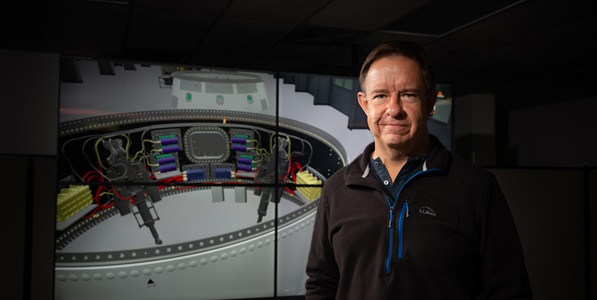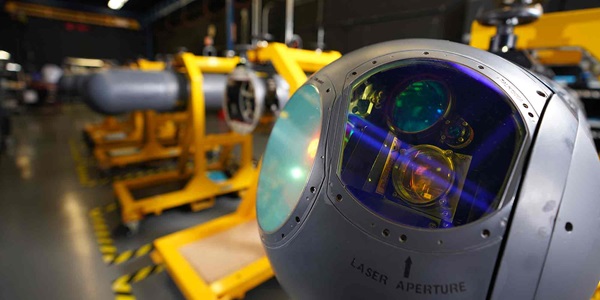Revolutionizing Military Operations with Augmented Reality

By Kelly McSweeney
Augmented reality (AR) is in the early stages of new technology. Social media filters are an everyday application of AR, but this technology can be used for countless other purposes, particularly in aerospace and defense.
One afternoon, Northrop Grumman's Sarah Garvis and Wes Harden were casually chatting about the possibilities for the Microsoft HoloLens 2, a mixed reality headset. Garvis, whose background is in management and development in AR and new technologies and Harden, whose work focuses on human interaction with automated systems and new technologies, started researching virtual reality and AR in defense and bouncing ideas off each other. Together, they developed an idea for an AR interface for the military to use to evaluate assets in the field.
“The HoloLens 2 is a new headset that allows for advanced systems in this technology, and few people are investigating its potential application in the battlespace,” said Garvis. “We saw an opportunity to leverage the HoloLens 2’s unique hardware capabilities to manage data flow.”

Hidden Benefits of AR
"We're doing something that could change the landscape of how we can help the military with their operations," says Garvis. “Working with new technologies that allow for advanced systems such as augmented reality (AR) and the HoloLens2, we saw an opportunity to leverage the unique capabilities to manage data flow with respect to the strengths and limits of human cognition and apply it to battlespace.”
The specific details of their project are still under wraps, but they will be able to release more information as the project matures. The potential applications are broad, and it could be used for reconnaissance, command and special operations.
"What's so exciting for me about this project is that it doesn't necessarily need to be applied to a specific niche," says Harden. He adds, "Ultimately, we're developing a user interface that can be applied in a multitude of different ways to many different sectors."
Finding Funding for a Passion Project with a Purpose
This versatility and potential reach helped the project secure a spot in Northrop Grumman's venture incubator within Blue Labs, an internal innovation program. Garvis and Harden submitted their idea for an augmented reality interface via Spark, a platform in which employees can apply for funding for innovative projects that don't fall within their usual job duties.
The project was approved in early 2021, and now they are getting started on transforming their idea into reality. They still have their day jobs, and now they also have resources for this passion project. They are leaning on the Blue Labs program for guidance while they bring additional subject matter experts into the project and start to develop a prototype.
"Often, the only thing that stands between a great idea and actual application is just some kind of funding, and given that Northrop Grumman offers that, it's a great place to innovate," says Harden.

Why Augmented Reality?
Other forms of mixed reality, such as extended reality (XR) and virtual reality (VR), are starting to take off in entertainment — for example, as popular gaming headsets that immerse the user in a world of graphics. And VR is already being used by the military for training purposes.
But Garvis explains that when it comes to the battlefield, AR is a better option because of situation awareness. It puts a graphical overlay on top of a transparent lens so you can see the real world with additional information. When soldiers put on an AR headset, they will still be able to see everything within their line of sight — but now with the added benefit of an interface to provide detailed intelligence at a glance.
This is truly just the beginning for AR. And technology specialists like Garvis and Harden are just beginning to investigate the many possibilities of AR to improve people's lives.
“Today, AR is being used by the U.S. Army with IVAS (Integrated Visual Augmentation System) and includes a ruggedized version of the HoloLens, plus an Augmented Reality Sandtable (ARES) – together, these technologies give the users enormous advantage,” said Garvis. “We are still finding the boundaries of AR and what we can do with it to improve what we have today and the positive impact with multiple industries.”
"The potential applications are almost too numerous to count," Harden adds. "And as with any new technology, there is potential to revolutionize the way in which we accomplish old tasks and augmented reality can offer avenues for exploration that allow developers to produce entirely new modes of interaction."
More Innovation Stories
Read all stories about advanced technology and innovation >>


